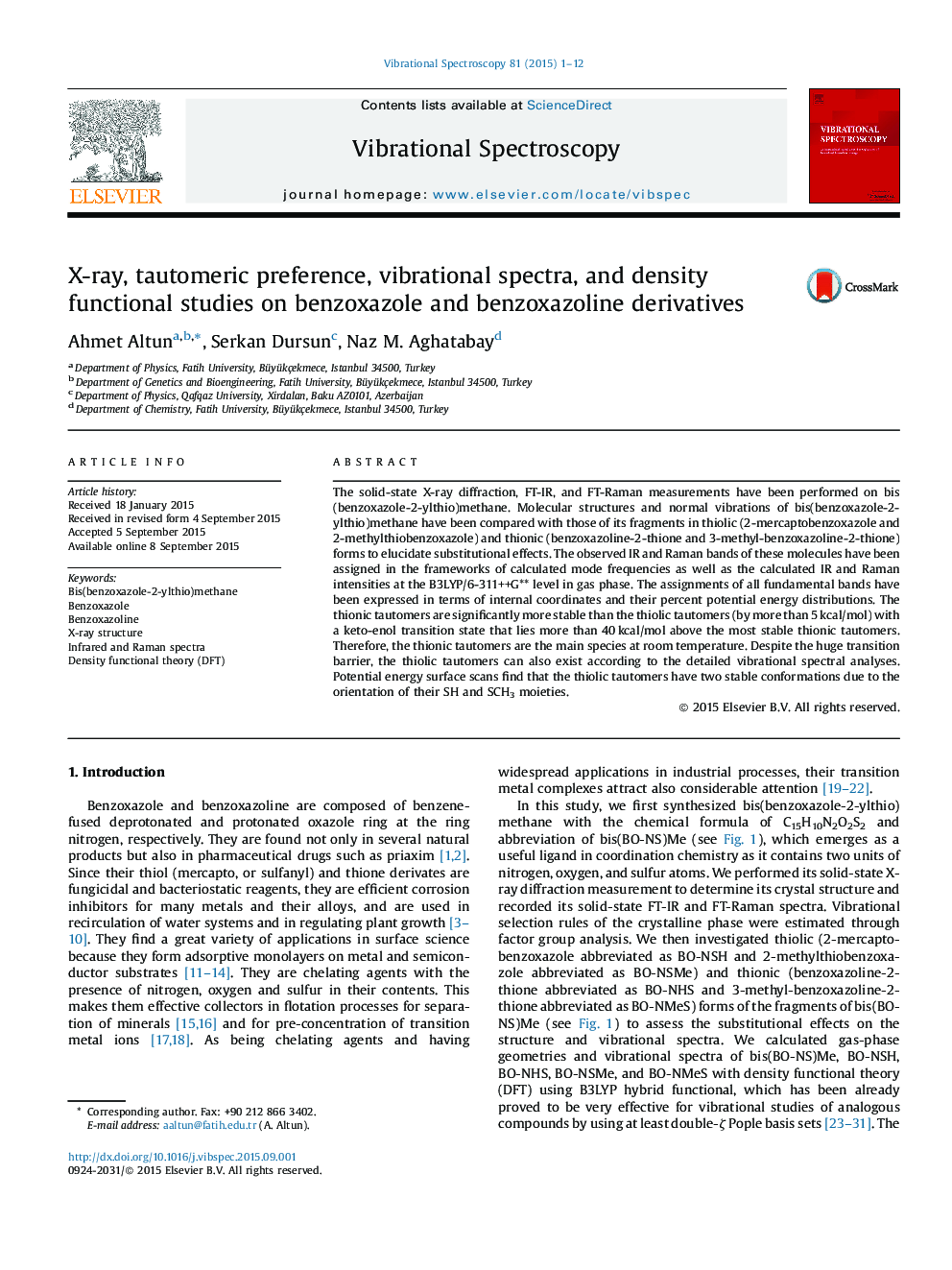| Article ID | Journal | Published Year | Pages | File Type |
|---|---|---|---|---|
| 1250219 | Vibrational Spectroscopy | 2015 | 12 Pages |
•X-ray and DFT study to investigate structure and vibrational spectra of the title compounds.•Substitutional effects on the structure and vibrational spectra have been discussed.•Benzoxazoline forms are more stable than the benzoxazole forms.•Benzoxazole forms exist also at room temperature as minor species.
The solid-state X-ray diffraction, FT-IR, and FT-Raman measurements have been performed on bis(benzoxazole-2-ylthio)methane. Molecular structures and normal vibrations of bis(benzoxazole-2-ylthio)methane have been compared with those of its fragments in thiolic (2-mercaptobenzoxazole and 2-methylthiobenzoxazole) and thionic (benzoxazoline-2-thione and 3-methyl-benzoxazoline-2-thione) forms to elucidate substitutional effects. The observed IR and Raman bands of these molecules have been assigned in the frameworks of calculated mode frequencies as well as the calculated IR and Raman intensities at the B3LYP/6-311++G** level in gas phase. The assignments of all fundamental bands have been expressed in terms of internal coordinates and their percent potential energy distributions. The thionic tautomers are significantly more stable than the thiolic tautomers (by more than 5 kcal/mol) with a keto-enol transition state that lies more than 40 kcal/mol above the most stable thionic tautomers. Therefore, the thionic tautomers are the main species at room temperature. Despite the huge transition barrier, the thiolic tautomers can also exist according to the detailed vibrational spectral analyses. Potential energy surface scans find that the thiolic tautomers have two stable conformations due to the orientation of their SH and SCH3 moieties.
